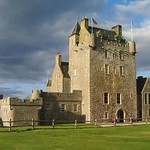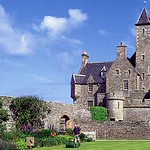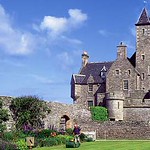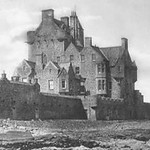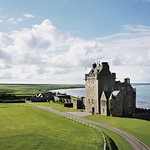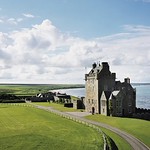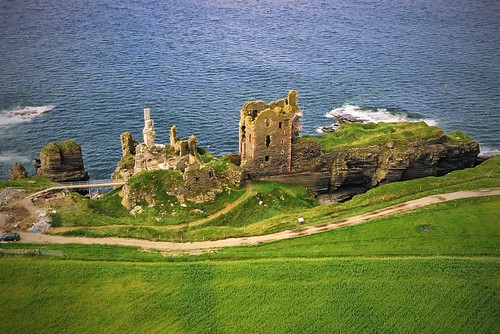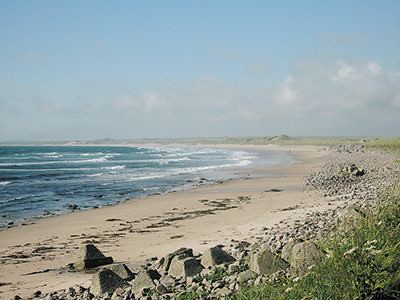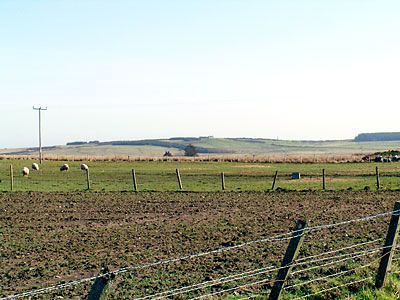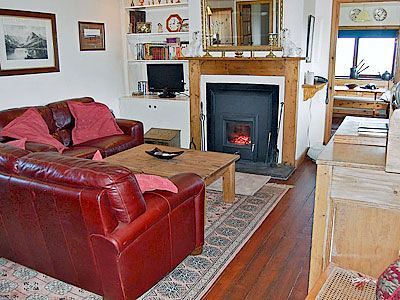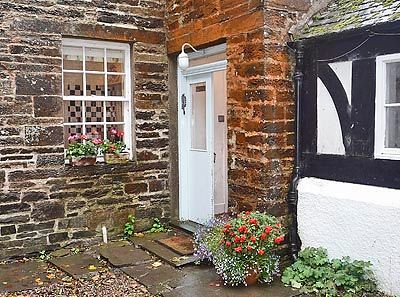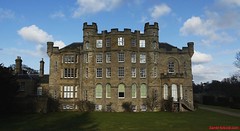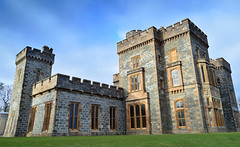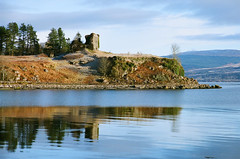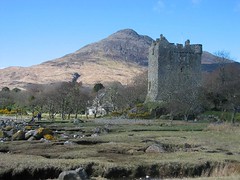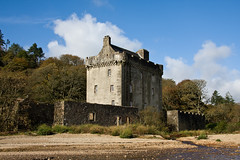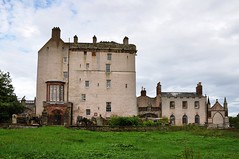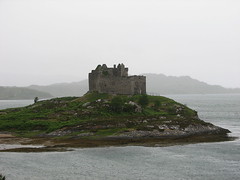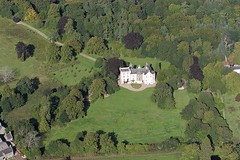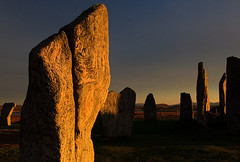Ackergill Tower
15th Century tower in an absurdly remarkable position overlooking the sea near Wick. Now super chic boutique accommodation and castle hotel. You can stay or just have tea!
For a period of a century or two, Ackergill Tower was scene for endless family shenanigans as Keiths and Sinclairs tried to wrest the tower from each other. Today, with a northern scotland denuded of people why anybody would care, but in the 16th century the castle was much more strategic.
The Clan Keith, under John Keith, inherited the lands of Ackergill in 1354 and we think that Ackergill Tower was built by his son. It was not mentioned until 1538 so early history was uncertain.
It is from this early period that the famous story of Helen Gunn dates. Known as the ‘Beauty of Braemore,’ she was abducted from her home in Braemore on her wedding night and kept prisoner in the Tower by the infamous Dugald Keith. Rather than succumb to his less than honourable advances, she leapt from the battlements. The stone on which she was believed to have fallen, and which bears her outline, can be seen nearby. This occurred sometime in the late 14th or early 15th century and is said to be the true cause for all the feuding between the Gunns and Keiths. It led to the Battle of Champions in either 1478 or 1464, a judicial combat which led to a massacre of the Gunns by the Keiths at the chapel of St Tear (or Tayre) just east of the village.
In 1547, the Sinclairs of Castle Sinclair Girnigoe attacked and seized the castle. Mary of Guise, then Regent of Scotland, granted the Sinclairs remission for this, and returned Ackergill Tower to the Keiths. She later installed Laurence Oliphant, 4th Lord Oliphant as keeper of Ackergill in 1549. The Sinclairs again captured the castle in 1556, for which they were again granted remission. In 1593, Robert Keith, brother to the William Keith, 6th Earl Marischal (who rightfully owned the tower), seized Ackergill by force, for which he was declared a rebel, and the castle was returned to the Earl. In 1598, another Keith, one John Keith of Subster, attacked the tower in the dead of night, taking its occupants by surprise and capturing the place. In 1612, the Sinclairs acquired Ackergill Tower once again, but through legal means, when it was sold to the Earl of Caithness by the Earl Marischal. However, by 1623 it was under assault once more, when it was besieged by Sir Robert Gordon during his feud with George Sinclair, 5th Earl of Caithness, but the Sinclairs surrendered the castle before any assault took place. In 1651, Oliver Cromwell may have used Ackergill Castle to garrison his troops during his siege of the Keith's Dunnottar Castle, as he was hunting for the Honours of Scotland. In 1676, John Campbell, 2nd Earl of Breadalbane and Holland took possession of Ackergill Tower in repayment of debts owed to him by the Sinclairs.
John Campbell put Ackergill Tower up for sale in 1699, and it was bought by Sir William Dunbar of Hempriggs. The Dunbars began extensive renovations, including the addition of a lean-to-shaped extension to the tower. In the mid 19th century, further additions including a cap house were made by the architect David Bryce on behalf of George Sutherland Dunbar, 7th Lord Duffus.
More recently the estate, from 1890 to 1986, had declined from over 100,000 acres to less than 4000, and the income generated from small farms rented to tenant farmers did little to support the cost of an ageing and demanding building. By this time Ackergill Tower was considered to be beyond salvation and was put up for sale.
It was bought by John and Arlette Banister; only the sixth owner in the Tower’s long and chequered history, and they embarked on a two year programme of restoration, which saw the castle meticulously restored to its former glory when it re-opened its doors in 1988.
The Tower was then sold again 2009. It is a very smart hotel!



